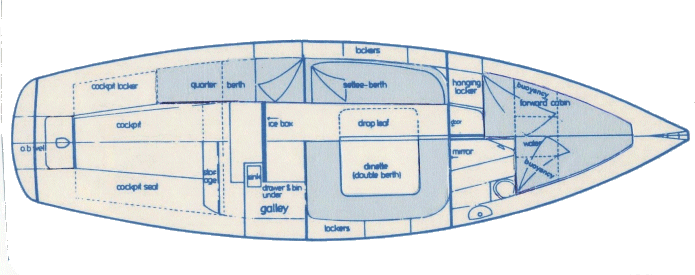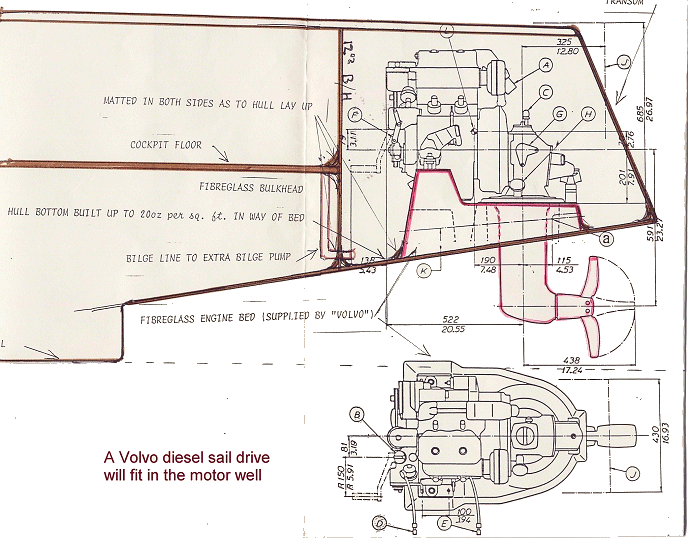from Rob Legg Yachts | |||||
|
|
|
|
|
||
Episode 3: Designing the RL28
The berths needed to double as seating, so 18 inches seemed about right for the height, but we didn't have a water line drawn in at that height, so as the width for the berth depends on its height I had to draw one in. To sleep four adults seemed a reasonable outcome, or alternatively two adults and three children. Would there be enough room to sleep two if the table were to fit in between the settee and the case side? Um may be, give it a try. Berths are all in but no where for the ice box (a very high priority for some); so the space under the cockpit floor would be fine if it doubled as a step up into the cockpit. The space left for the galley looked too small, but after some fiddling with a mock up, it met with June's approval, and she would finalise details there. That was it then, we could sort out shelves and other stowage places later. Hold on, how about a water tank in stainless steel for the galley, and it would have to be low down and close to the centre line. The only place left was under the aft end of the settee berth. The interior planning finished with for the time being, I had one last thing on my mind. I had been looking at a little diesel sail drive made by Volvo and had thought it would make a great alternative to an outboard for a cruising boat. I scaled down a drawing of the aft end of the boat to the same scale as the drawings of the motor, and found that it would fit comfortably in the motor well position. We were to be pleasantly surprised after trials of these units, they proved to be very efficient, used only half the fuel of an equivalent outboard and with diesel fuel then only half the cost of petrol a very economical motor to run.
 Go back to Previous Episode | Go back to Index | Go on to Next Episode |


